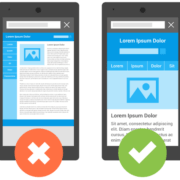Optimizing Responsive Search Ads in 2024
Responsive Search Ads (RSAs) are nothing new to the digital marketing landscape. Still, recent AI adaptations and updates now provide additional capabilities for RSA assets, such as the option to serve a single headline.
Responsive Search Ads (RSAs), Google’s dynamic ad format, have evolved as a cornerstone of digital marketing over the past few years. And in 2024, RSAs are not just an option; they are the default text ad format.
Google just launched substantial updates to asset management and creation for Responsive Search Ads (RSAs), including:
- The ability to display a single headline.
- Associate up to three headlines and two descriptions at campaign level.
- Implement account-level automated assets.
Google utilizes AI technology to predict which of the above capabilities could enhance your campaign performance, determining the most suitable approach for your ad. Before we head more into the recent AI updates, here are our top three actionable strategies to optimize your RSAs and boost campaign effectiveness in 2024.
1. Harness the Power of Asset Label Analysis
Venturing deeper into the optimization of Responsive Search Ads (RSAs), we strongly advocate for a meticulous examination of Google Ads‘ asset labels. These labels, meticulously assigned by Google, serve as invaluable indicators, offering a comprehensive breakdown of the performance of individual headlines and descriptions within your RSAs. Through a methodical two-week monitoring period, you gain a profound understanding of which assets excel and which may fall short, ensuring that decisions are rooted in robust insights rather than momentary fluctuations.
Following this observation period, we recommend a proactive approach to replace underperforming assets. This strategic move aims to maintain the highest level of relevance and engagement in your RSAs, optimizing them for peak performance. By continuously refining ad components based on granular analysis, marketers not only enhance overall campaign quality but also help ensure that advertising budgets are directed towards elements proven to drive results. This meticulous examination of asset labels provides a transparent window into campaign intricacies, empowering marketers to make informed decisions for continuous improvement and efficient resource allocation in the dynamic landscape of digital marketing.
2. Diversify Your Headlines for Maximum Impact
Broaden your ad’s reach by incorporating various headlines in your RSAs. The more headlines, the better, as this strategy allows you to target a wider range of keywords, thereby reaching more potential customers. While increased Click-Through Rates (CTR) may occur, it’s crucial to note that this doesn’t automatically translate to a boosted conversion rate. On the upside, more headlines lead to increased total impressions, offering Google the flexibility to craft the ideal ad for diverse situations.
3. Embrace Smart Bidding Automation for Targeted Results
Optimize your RSAs by embracing smart bidding automation, a powerful tool for preventing ads from reaching irrelevant audiences. If manual bidding exposes your RSAs to less likely converting audiences, it can adversely impact your Search Engine Advertising (SEA) budget. Smart bidding, coupled with Google’s automatic ad delivery, helps ensure your ads reach the right audience efficiently. Leveraging machine learning systems, we suggest that future-proofing your search ads involves making the most of Google’s automation capabilities, leading to approximately 20% more conversions at a similar cost per conversion, according to Google’s search data.
2024 Updates to Utilize
Utilizing Google’s AI for campaign strategy prediction can amplify engagement and performance, though it entails ceding more control to Google. It’s crucial to acknowledge that while AI is potent, it isn’t infallible, leaving room for potential inaccuracies in performance forecasts.
- Headline Enhancement: Responsive search ads now offer the option to display a single headline for optimized performance, with the potential for headlines to appear at the start of description lines. This feature was implemented following observed testing by advertisers last year. Assets assigned to specific positions will maintain their placement. To evaluate headline frequency or positioning, consult the combinations report.
- Campaign-Level Updates: Advertisers can now associate up to three headlines and two descriptions at the campaign level, with the ability to fix them to designated positions. For time-sensitive promotions, such as sales, advertisers can schedule start and end dates for these assets. Once added, headlines and descriptions become eligible for display in all responsive search ads within the campaign.
- Account-Level Automated Assets: Opting into account-level automated assets allows leveraging Google AI to generate assets such as dynamic images, sitelinks, callouts, and structured snippets. AI-generated assets will replace manually created ones of the same type when predicted to enhance performance. This marks a departure from the previous precedence of manually created assets.
- Google’s Statement: A Google spokesperson emphasized that these updates aim to enhance the effectiveness of RSAs, aligning with the goal of delivering the most relevant ad to the right audience at the right time. Changes will be reflected in advertisers’ combinations reports, and the pinning mechanism will remain available.
Final Thoughts
In the dynamic landscape of digital marketing, staying ahead of the AI curve requires not only adapting to current trends but also foreseeing future changes. Trust Onimod Global to guide you through the evolving world of digital marketing and help you achieve your goals.
Beyond RSAs, Onimod Global is dedicated to sharing insights on general Search Engine Advertising (SEA) and other digital marketing strategies. With extensive knowledge in SEO, social media advertising, and digital marketing, Onimod Global is your partner for online brand success. Have questions or want to learn more about RSA optimization? Contact us today.










